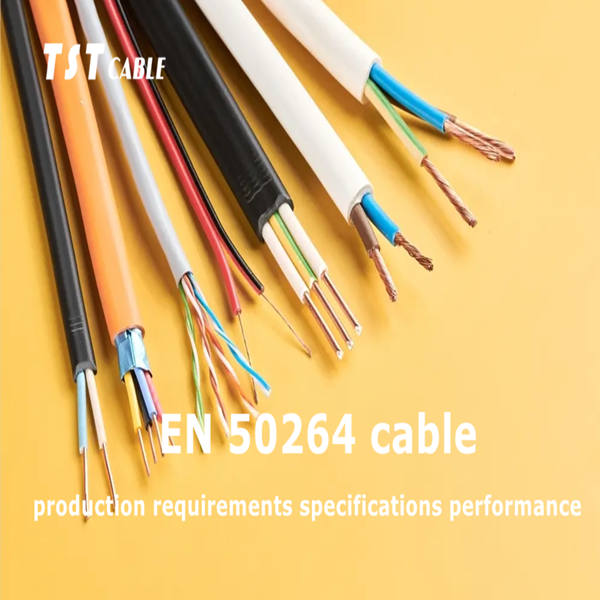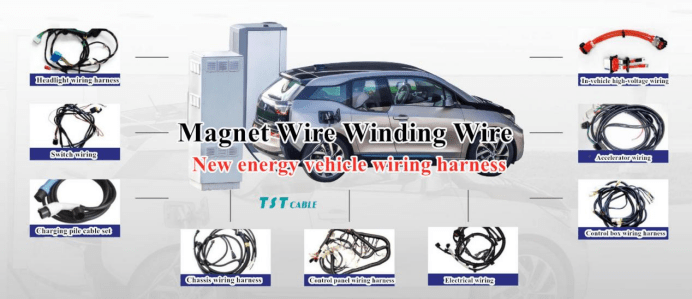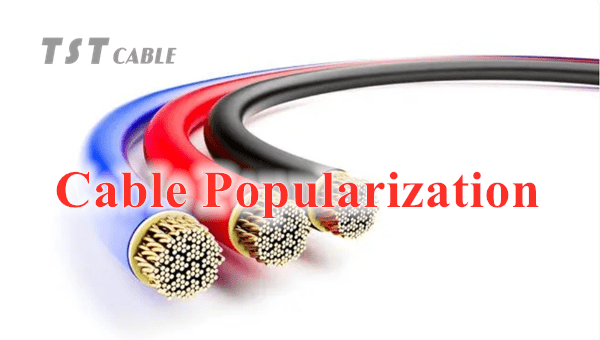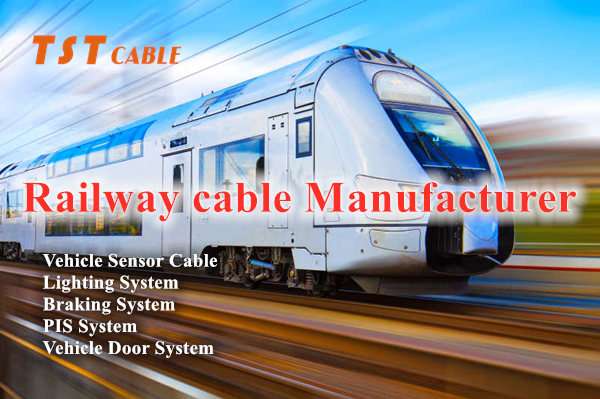EN 50264 is a European standard for power and communication cables, specifically covering the requirements and test methods for Low Smoke Zero Halogen (LSZH) cables. The following is a detailed description of the EN 50264 standard:
Scope of the standard:
The EN 50264 standard applies to control, instrumentation and communication cables in the field of power and communications, especially where low smoke, halogen free materials are required.
Material requirements:
Insulation materials: Low Smoke Zero Halogen (LSZH) materials are required, these materials produce less smoke and harmful gases when burned and are safer for personnel and equipment.
Conductor materials: There are also certain requirements for the materials used in cable conductors to ensure the performance and safety of the cables.

Depending on the application requirements, the EN 50264 standard specifies different types of cable constructions, including shielded or unshielded, single or multi-core, different conductor arrangements, etc.
Physical properties:
The physical properties of cables include requirements on outer diameter, bending radius, voltage resistance, etc., to ensure that cables can operate reliably in different installation environments.
Electrical properties:
Including conductor resistance, insulation resistance, dielectric strength and other tests to ensure that the electrical properties of the cable meet the requirements in the process of use.
Combustion performance:
According to EN 50264 standard, the cable needs to pass the combustion test, including the test of vertical combustion, smoke generation, acid gas concentration and other indexes, in order to evaluate the safety performance of the cable in fire situation.
EN 50264 Cable Test Methods:
The EN 50264 standard describes in detail the methods and criteria for conducting various tests on cables, including physical tests, electrical tests and combustion tests.
Scope of Application:
The standard applies to cable applications in a variety of settings, especially where low smoke and halogen-free performance is required, such as public buildings, subways and ships.
Overall, the EN 50264 standard aims to ensure that power and communication cables meet the requirements of various applications on the basis of safety, reliability and environmental protection, with a particular focus on reducing the risk of combustion, reducing the production of smoke and harmful gases, and improving safety in the event of fire.
TST CABLES EN50264-2-2 Shielded Standard Wall Thickness Multi-Core High Temperature Cables Overview
EN50264-2-2 Shielded Standard Wall Thickness Multi-Core Cable
EN50264 Application:
Used as power and control cables in internal or external installations in railroad transportation locomotives, where handling and installation costs are important factors to be considered.
Used for train control, auxiliary and main circuit wiring such as cable TV slings, switch and control panels, driver’s consoles etc.
EN50264 Cable Construction:
Conductor Flexible tinned annealed copper wire according to HD 383 (IEC 60228) class 5.
Insulation Low smoke halogen free elastomeric compound according to EN 50264-1 (EI 101 to EI 104).
Conforms to TJ/CL313-2014 Technical requirements for wires and cables for rolling stock.
Passed BS6853:1999 and DIN5510-2:2009 fire, smoke and toxicity tests.
Conform to the requirements of BS6853:1999 for Ia, Ib and II class locomotives on internal and external cables.
Conforms to the requirements of DIN5510-2:2009 for flammability class S1~S5.
Scope of use of EN50264:
The TST CABLES EN50264 series covers power and control cables and their associated circuits that reduce the risk to people in the event of fire and increase the safety of transportation. Cables with or without sheathing are insulated and sheathed with halogen-free materials. In case of fire, the products of this unit can limit the spread of flames, reduce the emission of toxic gases and smoke, minimize the loss of visibility, and enable the rapid evacuation of people.
Electrical and mechanical properties:
Voltage 0.6/1 kV or 1.8/3 kV
Conductor high temperature rating 90°C (fixed installation)
Allowable low ambient temperature -25°C /-40°C (fixed installation)
Small bending radius 3 times large outer diameter (D<12mm)
4 times larger outer diameter (D>12mm)
Chemical and environmental characteristics:
EN 60684-2 Fluorine-free
EN 50305; EN 60811-2-1 Oil and Fuel Resistant
EN 50305 Ozone Resistant
Fire resistance for in-vehicle system applications:
EN 50306-2 Hazard Class HL1, HL2/HL3, HL4
DIN 5510-2 Safety Class 1/2/3/4
BS 6853 Indoor applications 1a, 1b, II; Outdoor applications 1a, 1b, II
NF F 16-101 FO
Basic fire performance:
EN 50265-2-1; IEC 60332-1; BS 4066-1 Vertical flame propagation test for single insulated wires (cables).
EN 50266-2-4 + EN 50305; IEC 60332-3C Flame propagation test for bundled wires (cables)
VDE 0472 Teil 804; BS 4066-3; NFC 32070
EN 50268-2; IEC 61034-2; VDE 0472 Teil 816 Smoke Density Tests
EN 50267-2-1; IEC 60754-1; VDE 0472 Teil 815 Halogen free testing
EN 50267-2-2/3; IEC 60754-2; VDE 0472 Teil 813 Gas corrosion test (acidity & conductivity)
EN 50305; NFX 70-100; NFF 63808; TM1-04; BS6853 Toxicity Index Testing
nff 16101; nff 63
EN 50264 Use characteristics:
1, The cable AC rated voltage is 0.6/1kv, 1.8/3kv, 3.6/6kv.
2, cable operating temperature is -40 ℃ ~ 90 ℃. Continuous operation temperature does not exceed 90 ℃, the maximum short-circuit temperature of 200 ℃, 5 s. In case of fire, such cables have excellent performance in preventing the spread of flame, smoke and toxic gas dispersion.
3, safety: the cable’s chlorine content of 0, so no hydrogen chloride gas overflow in the overheating or combustion, no damage to people and instruments, meters.
4, the permissible bending radius of the cable: fixed laying for 5 times the outer diameter of the cable; non-fixed laying for 6 times the outer diameter of the cable.
5, the cable meets the low-smoke halogen-free performance. Cable combustion gas release test to meet the total amount of halogen gas <5mg/g, pH value ≥ 4.3, conductivity ≤ 10us/mm, light transmission rate ≥ 70%.
6, toxicity index: equivalent to the European standard toxicity index is not greater than 3, equivalent to the iron standard toxicity index is not greater than 5.
7, the cable can be used in mineral oil and fuel oil contaminated occasions.
8, the cable has a single vertical combustion resistance characteristics.
9, solvent resistance, acid and alkali resistance properties.
10, TST CABLES can produce EN 50264 cable various colors and specifications of cables according to customer requirements.
EN 50264 Future trends in cable material requirements:
EN 50264 cable material demand for future trends are mainly manifested in low-smoke halogen-free flame-retardant materials, cold resistance, high-performance materials and irradiation crosslinking cable materials to increase demand. These trends are not only in line with the requirements of environmental protection, safety, efficiency and other modern social development, but also reflect the technical progress of the cable materials industry and changes in market demand.
Also available in:
English



测试2-1024x557.png)

